

Damion Smy
GWM Cannon Alpha ute, Tank 300 HEV and Tank 500 recalled
13 Hours Ago
The Suzuki Jimmy is the most hard-core off-roader cheap money can buy. But what's it like as an urban fun machine?

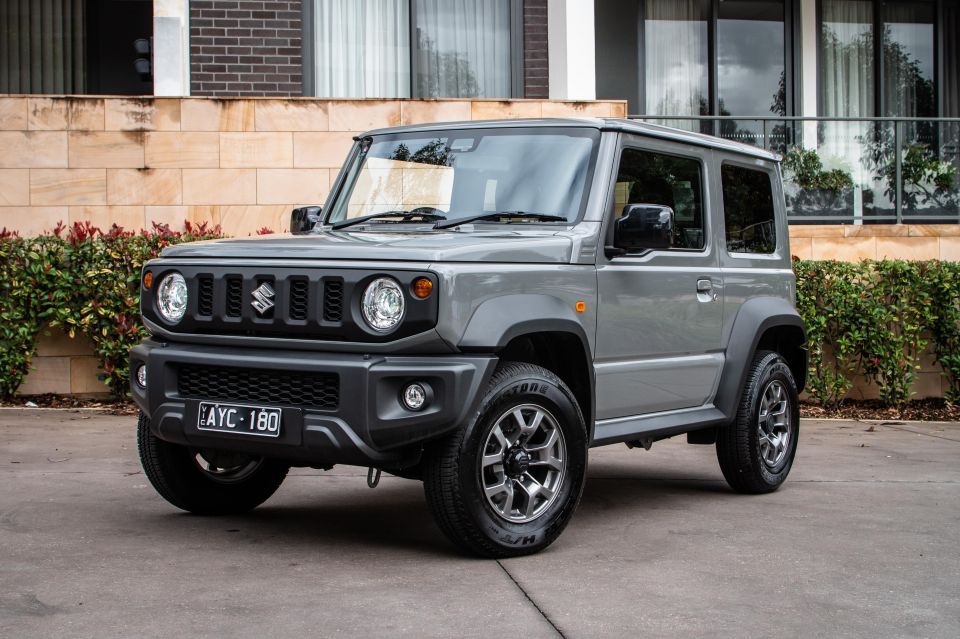

Journalist

Journalist


Journalist

Journalist
Where expert car reviews meet expert car buying – CarExpert gives you trusted advice, personalised service and real savings on your next new car.
Fun factor. That’s not usually much of a priority when shopping for compact mid-$20,000 runabout. That is, unless the fringe-dwelling Suzuki Jimny is even on the edge of your ownership radar. It’s a machine as quirky as it looks, one that largely thumbs its bluff nose at sensibility and demand that in the experience for the fun of it.
Just look at it. If its boxy, caricaturist throwback design doesn’t give you split-melon grin from fifty paces, you might as well wipe the Jimny off your shopping list from the get-go.
Of course, fun is subjective: one’s fun of downhill mountain biking is another person’s fun of couch slouching with Friends reruns. The Jimny’s skewed more towards the former types, out for a bit of rough-and-tumble enjoyment, the more grit and less comfort concessions the better.

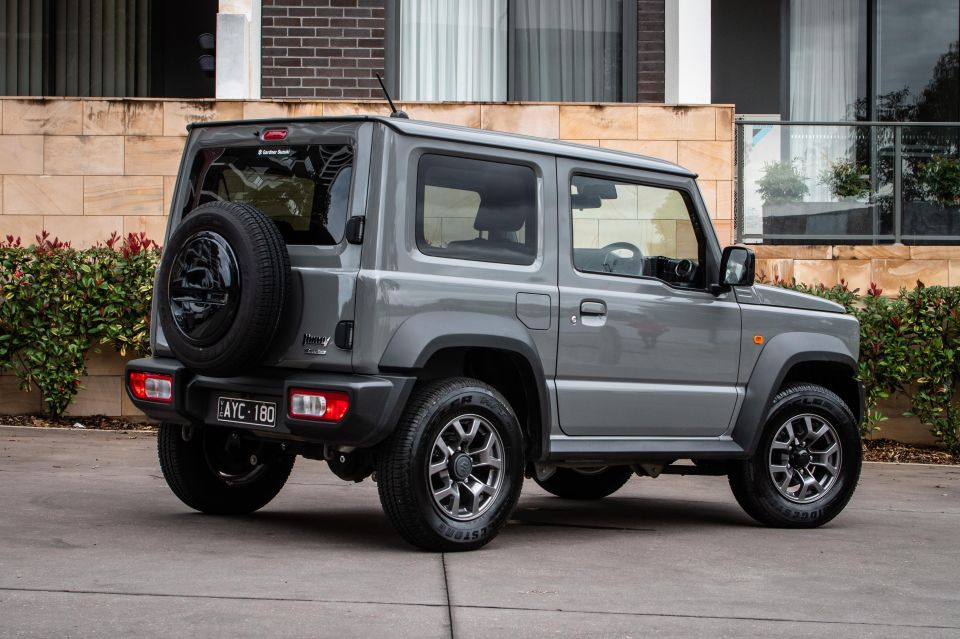
Don’t let the cheap investment and pint-like size fool you. The Jimny is a properly hardcore off-roader, with all of the body-on-ladder-frame, rigid axle, three-link suspension, dual-range all-paw drive, hilarious wheel articulation and rock-leaping clearance bona-fide off-roading demands.
If it’s a mite agricultural, that’s kind of the point. And if it’s a bit uncouth on the sealed stuff because of it, well that’s its character.
Cool, interesting and affordable: surely some buyers will eagerly take an urban lifestyle ownership punt with Jimny. So is the boxy Suzuki Jimny a happy enough fish out of its intended rough seas? And might it be simply too tiresome to live with as an everyday commuter or grocery getter?
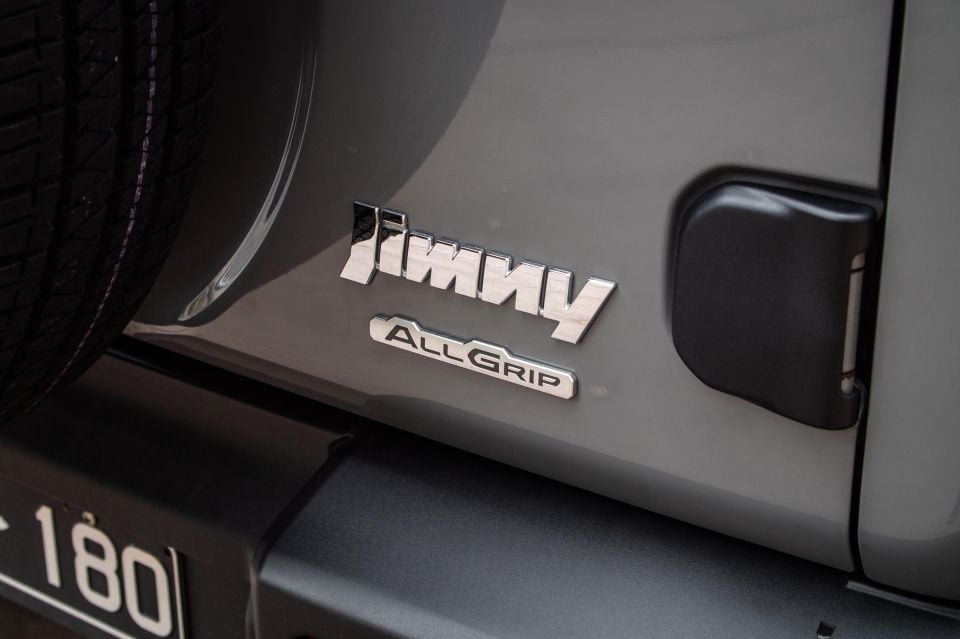
The one-variant ‘range’ offers simply the choice of transmission types, asking $25,990 before on-roads with a five-speed manual and a $2000 upcharge for the four-speed conventional automatic we have on review here.
For context on how cheap that is, the closest logical mud-kicker in concept is Jeep Wrangler starting from around $50,000. Mimicking the charmingly boxy aesthetic in jumbo-sized Benz-AMG G-Wagen form is a ten-fold investment.
There are six colour schemes and it’s a cool selection: plain no-cost White, military-look solid Jungle Green and Medium Grey ($695 each), desert-vibe Chiffon Ivory Metallic, Brisk Blue Metallic and retina-burning Kinetic Yellow, the latter trio ($1295 each) in fetching two tone with a neat bluish-black roof.
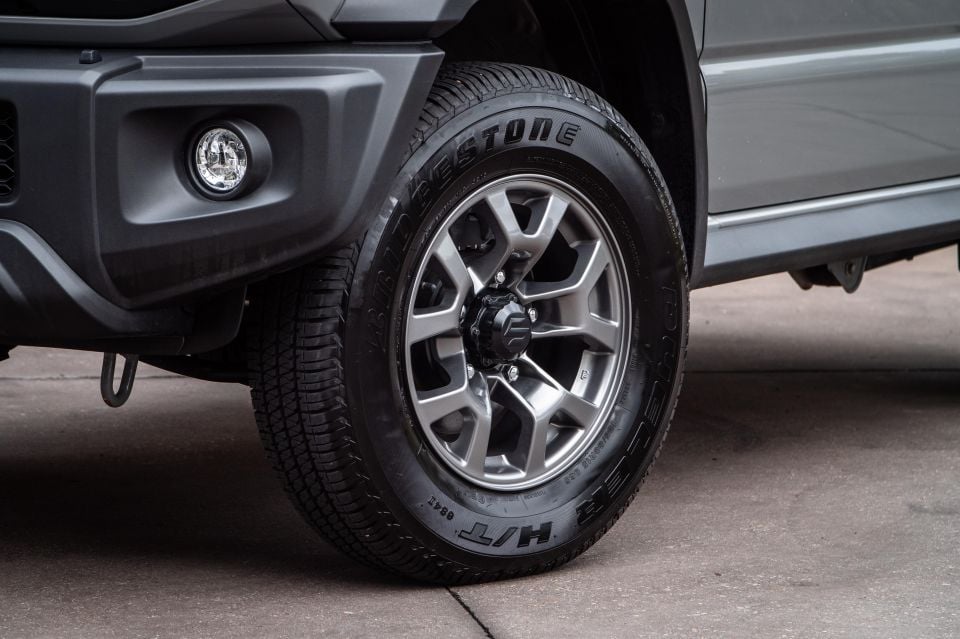
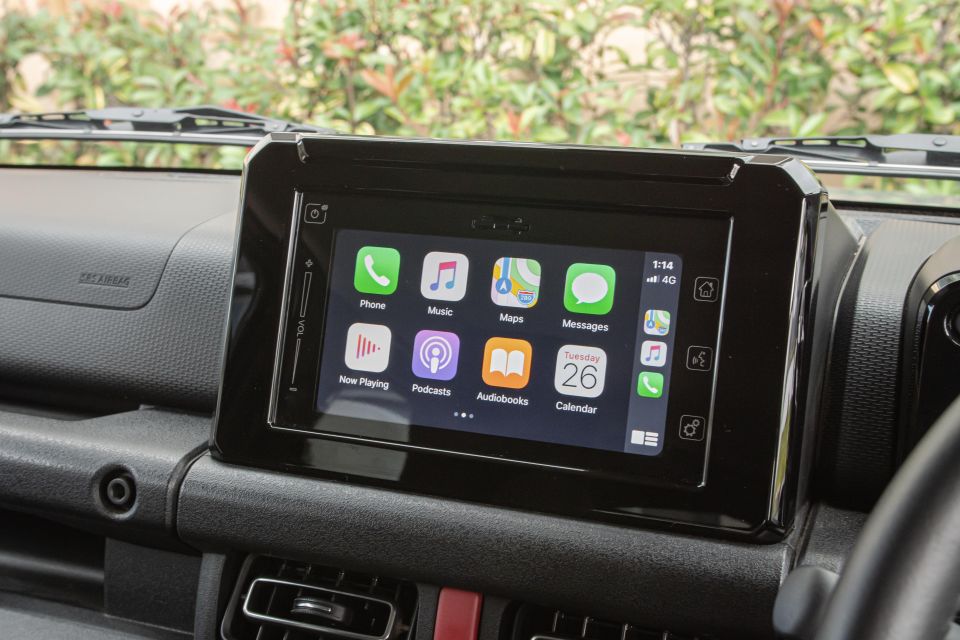
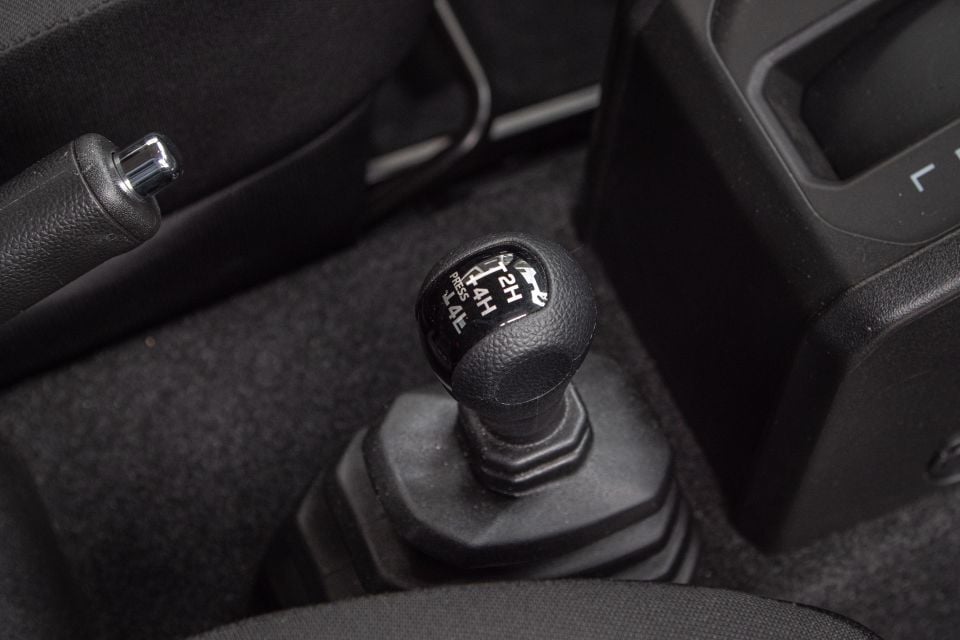
Buy your new car without the stress. It's fast, simple and completely free.

Great service from Travis and team, second time I have used this business would not hesitate to recommend them to anyone
Craig C.
Purchased a Ford Ranger in Sunshine Coast, QLD
CarExpert helped Craig save thousands on his Ford Ranger, now let us save you on your next new car.
Find a dealLet’s face it, a fair chunk of the Japanese-built Jimny’s cost is sunk into its Tonka tough underpinnings. Creature comforts are sparse and material choice is generally hardy and functional, as they arguably should be with a four-wheeled companion intent on being thrust into the mulga for recreational purposes. Well, make that ‘five wheeled’ of course, given the conspicuous spare hung off the rear door.
Highlights include LED headlights, a 7.0-inch touchscreen with reversing camera, Apple CarPlay and Android Auto mirroring, two-speaker (yes!) audio, cruise control, climate control, powered front windows and mirrors, and privacy glass.
It’s pretty basic, but it does bring a host of feel-good feature much in the way that, say, a humble van or tradie-spec cab-chassis ute doesn’t.
Between the side-hinged rear door, plastic rear seat back caps – that effectively create a hard boot floor with the seats stowed – the hex-bolt detailing, loads of exterior plastic cladding and handsome alloy wheel design, it packs a helluva lot of charm in its tiny 3.645-metre-short form.
Importantly, it smatters its goodness in important areas where you want it and where you notice it, be it the neat leather-wrapped multi-function steering wheel or that Suzuki equipped proprietary sat-nav in the one model itching to go places beyond mobile reception.
Worth a mention is that hill descent control and hill holding functionality is absent from the auto goodies list and instead only fitted to the manual version.

For safety credentials, the Suzuki Jimny is a fairly average three-star ANCAP proposition.
It does fit some decent gear. The autonomous emergency braking system uses camera and laser inputs while lane-departure warning functionality and six airbags (front, side and curtain) are standard.
And while its underpinnings largely draw from old-school ethos, the electronic governance of ABS, electronic brake force distribution, brake assist as well as stability and traction control are all up to date.
So why just three stars? While scoring well in child occupant protection (84 per cent), ANCAP found the tiny Jimny isn’t as structurally sound as hoped and inconsistent in AEB calibration that negatively impacted Adult Occupant and Vulnerable Road User protection categories. Its Safety Assistance credentials, or lack thereof, resulted in a mere 50 per cent result.
One could argue that a three-star result is acceptable enough of the point of machine is hard-core off-roading. But as a road-going model mixing it on the urban or highway blacktop, it does appear a bit undercooked for safety.
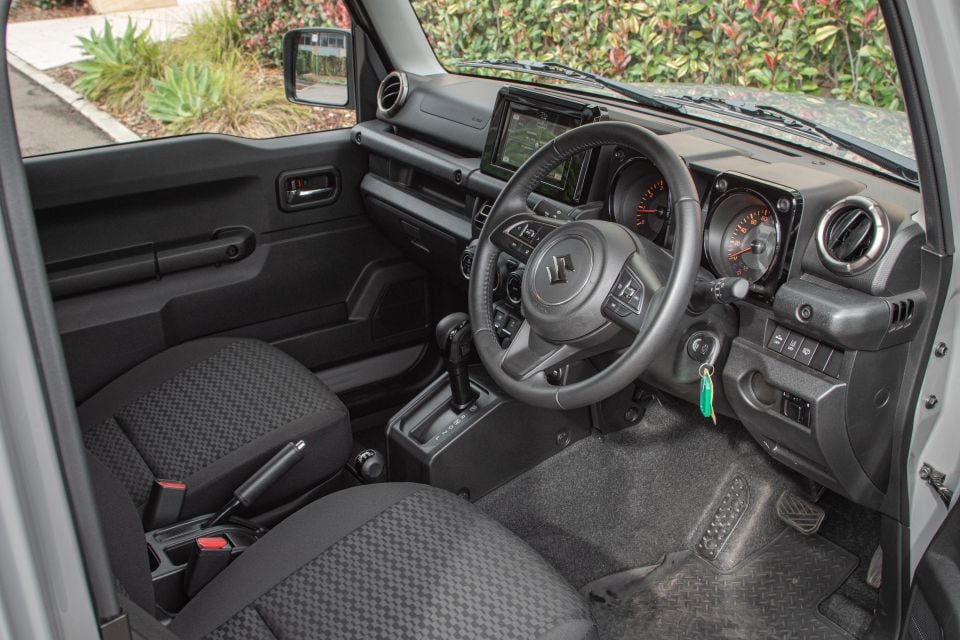
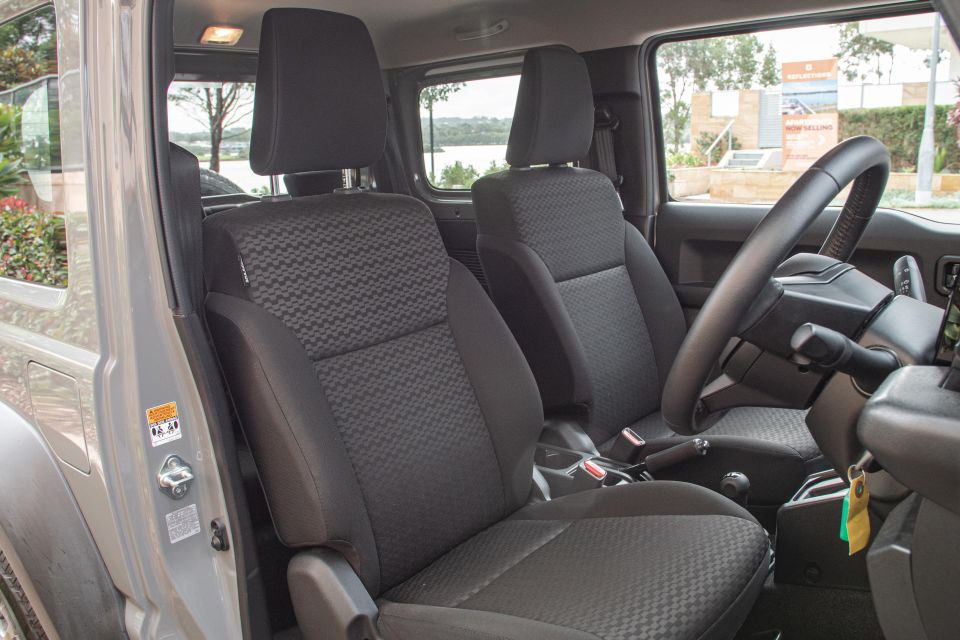
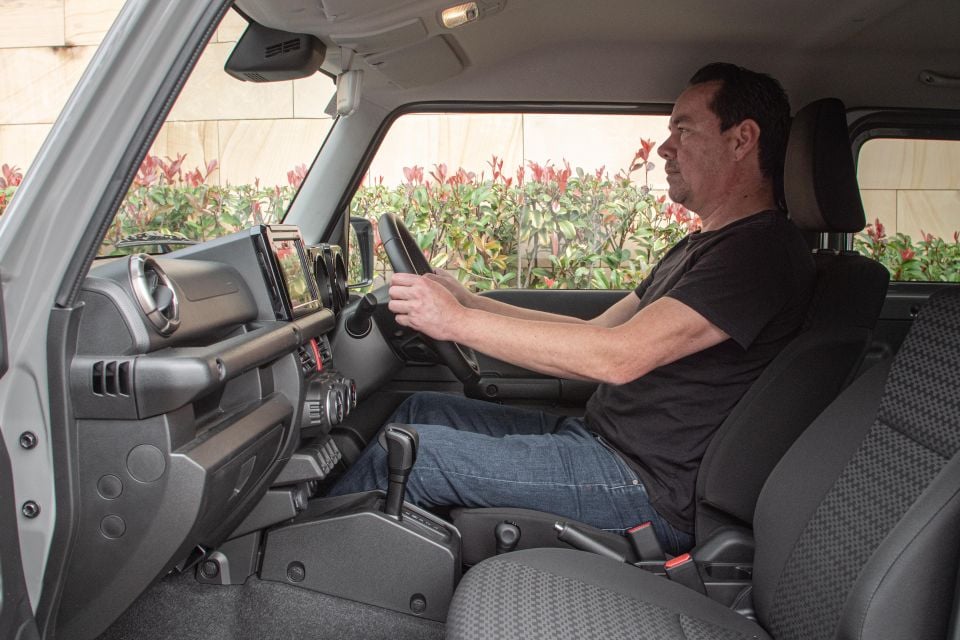
From a design perspective, Suzuki’s tiddler-on-stilts is equal parts delightful and somewhat frustrating. It would be easy to write Jimny off as form over function but it’s brilliantly packaged and that boxy form goes a long way to facilitate it, particularly in how much interior space is carved from such a diminutive form.
You don’t need a tape measure to marvel at its proportions – its (1725mm) height is approaching around half its length (3645mm) and it’s taller than it is wide (1645mm). Much of the real estate within its generous 2250mm wheelbase is taken up by the first-row accommodation behind the stubby bonnet and bluff windscreen.
It’s surprisingly roomy and airy up front, a little narrow in width but ample legroom and huge headroom. Such an expanse of glass you often feel like you’re driving a fishbowl.
Outward visibility is excellent (bar the spare wheel blind spot) aided by the high seat positioning, with no height adjustment, which leaves the driver’s windowsill as a handy surrogate armrest. There’s no wheel reach adjustment either, leaving the driving position a little compromised as taller drivers might need to sit more upright than is ideally comfortable.
Hard, shiny, boxy, kitchy – the Jimny cabin and its design elements revel in this theme and all the better for it. Bar the lack of digital speedo there’s no much to gripe about with its overtly ‘4×4 chunky’ interior.
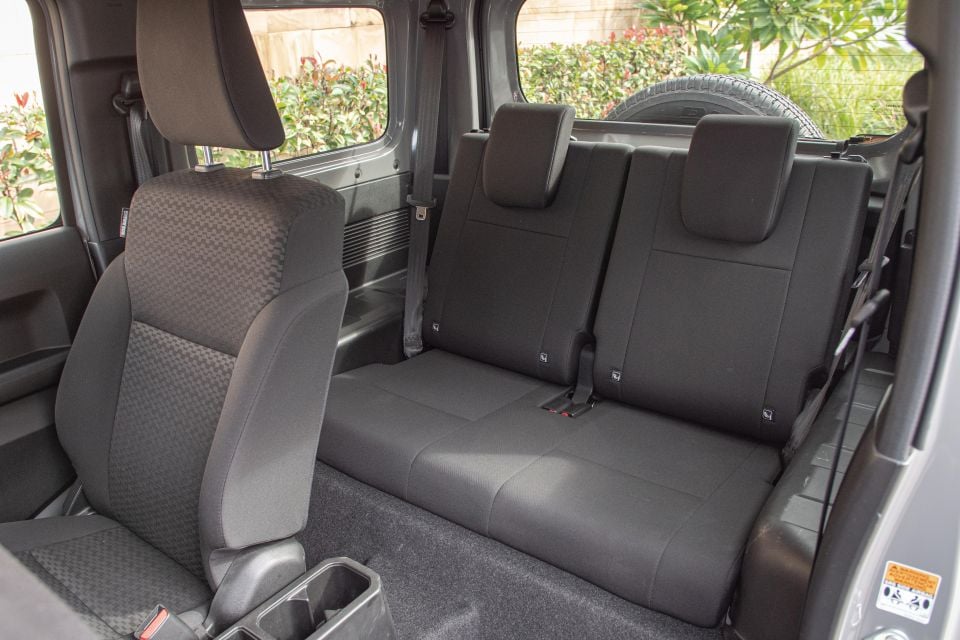

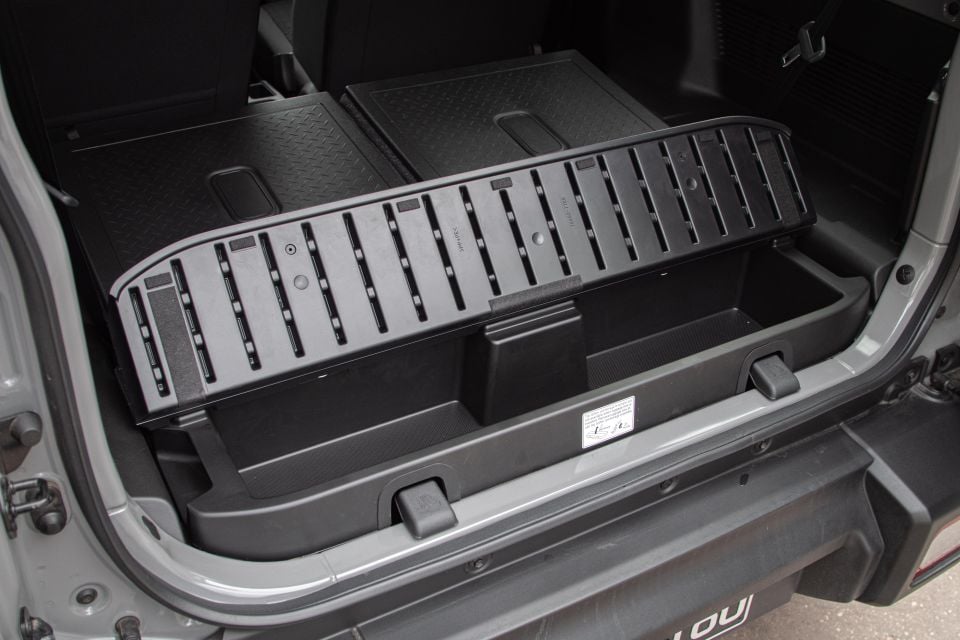
Thankfully for a vehicle with toy-like stature, the seats, instruments and controls are all adult sized. Infotainment is functional and, again, proprietary sat-nav is a boon for a proper out bush dweller, though what modest tech it does feature is fairly rudimentary.
Then there’s row two…or the boot, depending on whether or not you’ve folded the rear seat backs. There’s a paltry 85 litres of space between the seat back and rear door, barely enough for a handbag or a couple of cricket bats unless it’s converted into a two-seater.
Right here, practicality takes a bit of a nosedive. There are no rear doors and climbing into the second row is, for adults, inelegant clumsiness.
Once nestled in, it’s roomier than you might’ve imagined, though knee room is a bit limited. Further, the rear windows are fixed and can’t be opened and there are no air vents, so it can feel claustrophobic on long trips, sat next to your weekly groceries… If you’re chasing SUV sensibility you’ve come to wrong place.

The 50:50 split-fold seatbacks drop to provide a decent 377-litre space but, problem is, the hard plastic seat backs that transform into the floor – which seem like a good idea – makes for a load surface too slippery to secure luggage or groceries from sliding around the cabin. Hmm. Ideal for chucking mud-soaked camping gear, perhaps, which is the most likely rationale at play for the hard plastic surfacing.
You learn quickly, too, that supermarket runs demand you park nose first into perpendicular carspaces. That’s because the rear side-hinged door is so long that it’s hard to open backed up anywhere near a wall…and where you need to lift your groceries or luggage over the top of the rear seat backs.
A surrogate small family car it most certainly isn’t. But, in fairness, nor does it pretend to be.
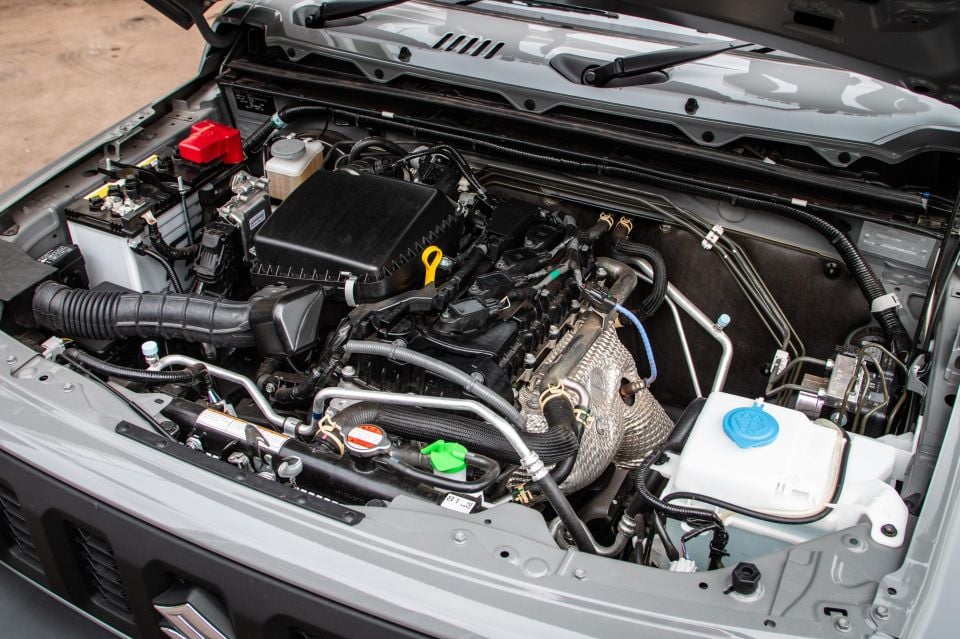
The little long-stroke 1.5-litre naturally-aspirated four makes 75kW at 6000rpm and 130Nm at 4000rpm, so it’s no powerhouse and demands a rev to earn its keep. But at 1110kg kerb the Jimny with four-speed auto is no porker – the five-cog manual, at 1095kg, is even lighter.
The pair get short, perky final drive ratios of 4.3:1 (auto) and 4.09:1 (manual), which not only helps keep Jimny toey in high-range 4×4 on the loose stuff, it makes on-road performance quite peppy off the mark.
The technical differences account for some of the half-litre disparity in combined consumption, the manual a much rosier 6.4L/100km claim against the auto’s 6.9L/100km figure.
We did find our test car’s 1.5 did have to work hard and often around town in compensating for the yawning ratio spread of the auto transmission, so real-world returns are closer to the mid-eight-litre mark. Not bad, not great.
Jimny’s mettle, though, is in chassis construction and the rest of the powertrain. It’s worth a good chunky of the mid-$25k, even if you use and abuse them or not.
The ladder-frame chassis has been reinforced and locates the rigid axles with three-link, coil-sprung suspension that, while hardly the last word in individual wheel control aimed at keen ride/handling balance, is match fit for strength and impressive articulation in rough and challenging terrain. There’s nothing anywhere near this 4×4-capable in the same price bracket.
The part-time four-wheel-drive system has manual two-to-four high-range and four-wheel low-range engagement via an old-school lever located behind the transmission selector and it fits the Jimny’s retro vibe nicely. There’s no mechanical rear LSD, though it does provide limited-slip traction enhancement via braking, which are drums in the rear with discs up front.
Approach (37 degrees), departure (49 degrees) and break over (28 degrees) are certifiably off-road savvy and ground clearance is a decent 210mm. You’re never going to tow a horse float with much success though it will haul more that it’s own weight (1300kg) braked, while unbraked towing is rated a modest 350 kegs.
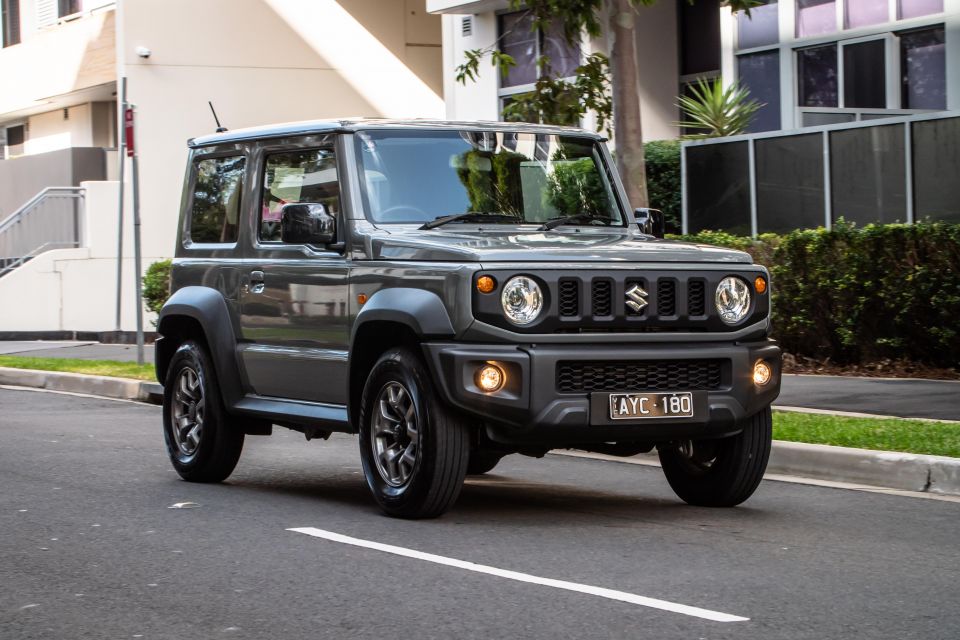

One-up, the Jimny gets up and boogies fine, though the engine is a bit gruff under load even if refinement itself is pretty decent. With the 1.5’s high torque peak and only four forward ratios to harness, digging in for some rpm is par for the course and it makes a fair racket once you give it the berries.
It’s far from effortless. The auto’s want to climb to overdrive fourth a little too eagerly makes the ‘OD Off’ button on the trans selector a handy ally climbing hills or in desperate overtaking attempts. You can also manually engage L (first) or 2 (second) rather than D for drive, though they’re all bandaid options in the absence of decent torque.
Such traits usually annoy, but in a Jimny context it’s strangely charming and a match for its inimitable look and vibe.
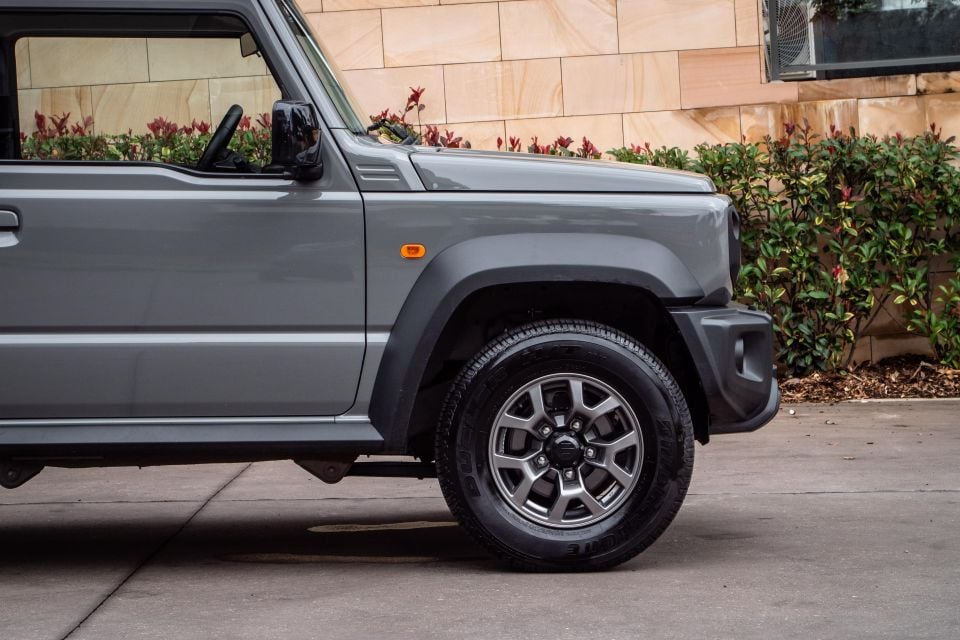
It’s a little tough nugget of a vehicle and that it drives as such is, if anything, endearing and entertaining. I’ve spent decent seat in the manual, too, and while rowing the gears like an Olympic sculls medalist to keep the 1.5 on boil is a chore for some, I found it enhanced the driving engagement and fun factor, even during the daily commute.
The Suzuki Jimny experience does begin to grate on motorways, where the din of the 1.5 spinning away at 3500rpm and the almost total absence of ambient and tyre noise deadening makes long-hauling a sport only proper masochists might enjoy.
The three-door deserves a dedicated 4×4 assessment to allow it to shine its brightest light, but on road the almost blunted off-road character of the handling package is actually a quite a hoot. There’s an alarming dullness to the steering off centre and only general cooperation the more lock you wind on.
That soft body control might allow impressive wheel articulation in deep divots and moguls out bush, but around town exacerbated amount of body wobble negotiating speed bumps and driveway dips. Actual ride, though, is quite resolved: fidgety at low speed but not overly taut and the suspension damping settles nice and quickly.
It is an event to drive, even to the shops for milk. It feels a bit naughty, somewhat challenged and challenging, and it’s downright hoot if approached with a certain mindset.
For instance, between the steering, the handling and lack of purchase of those all-terrain tyres makes the notion of chucking Jimny into a corner with gusto both daunting and daring. And as perhaps the least stable-at-speed vehicle I’ve driven in the modern era, it’s always got a decent grip of your concentration.
The message Suzuki Jimny sends in on-road feels is as bold as its stance everywhere else. If you want benign, predictable and dull, go somewhere else. Go buy a ‘sensible’ compact SUV instead.
And yet, it’s not hard to drive. Its turning circle, at just 9.6 metres, is impressively tight. Outward vision is extraordinarily good. The reversing camera, while quite wide angled, is large and clear. And the absence of parking sensors doesn’t really impact badly on a machine so short it cruises into car spaces you’d be swapping bumper paint with in with your average ‘small’ SUV.
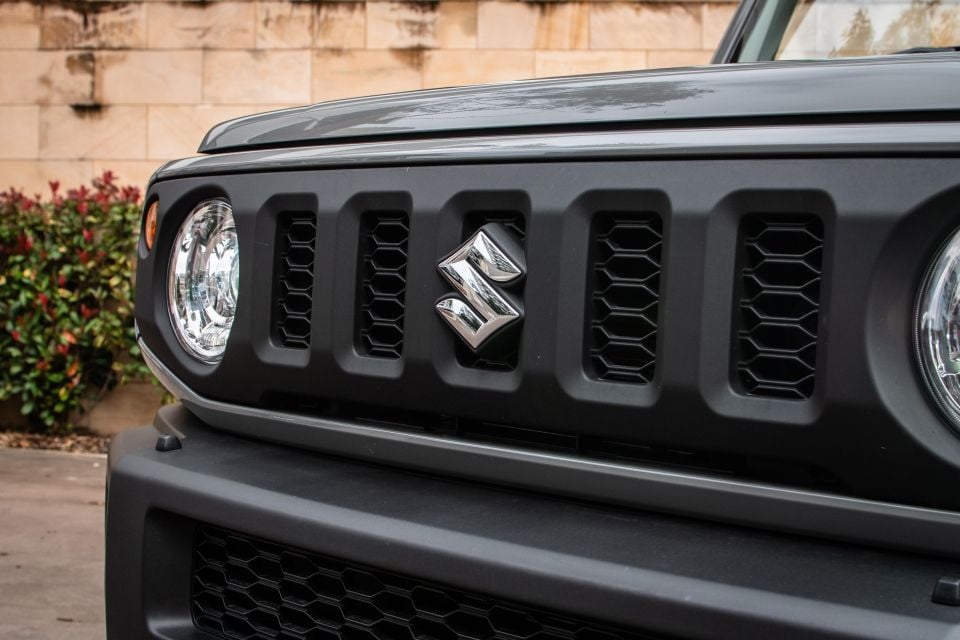
Like the rest of the Suzuki range, the Jimny is covered by a five-year, unlimited-kilometre warranty for private usage.
The capped-priced servicing intervals are 12 months or 15,000kms, whichever comes first, through five years and up to 75,000kms for the regular schedule (plus an extra-cost option if you’ve travelled up to 90,000km but under 60 months). Interval costs are between $239 and $429 over five years, averaging out to $331 per year.
Jimny happily runs on regular 91RON fuel.
The Jimny is a fun car with a fun vibe. Its ever-present quirks drew, on balance, many more smiles than frowns in our week-long custodianship of mostly urban driving. But while it certainly seems easy enough to live with short term, the jury is out as to whether its ‘charms’ become tiresome in the longer term.
Could you live with it as a daily driver? Sure, but it is an acquired taste. Our advice is that even if you really like the cut of its theoretical jibe, invest in a decent practical test drive before you part cash to ensure it’s particular vibe suits.
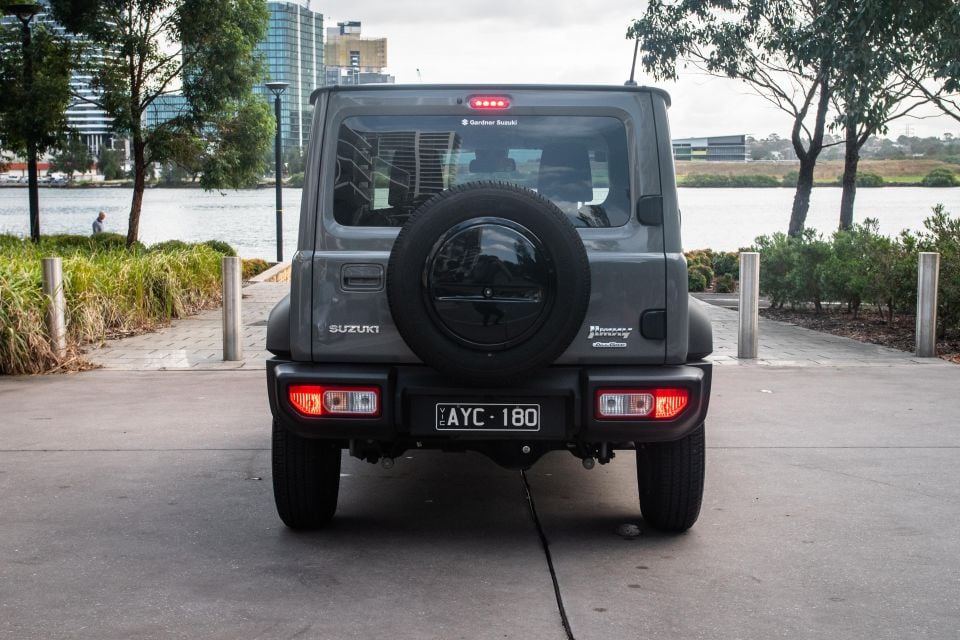
For my money, the only real downsides are outright safety credentials and the practical limitations around rear passenger and luggage space. On that, the Jimny is more ideally suited to some buyer tastes and whims than others.
‘Get it’ and the little Suzuki is quite a hoot and can be recommended to a degree that don’t aptly reflect in relatively stolid review ratings.
Better yet, as an affordable and funky city car, its strong reputation as a knockout off-roader makes it the perfect companion should you wish to go bush and give off-roading a bit of a crack for laughs.
Where expert car reviews meet expert car buying – CarExpert gives you trusted advice, personalised service and real savings on your next new car.


Damion Smy
13 Hours Ago


CarExpert.com.au
5 Days Ago


Damion Smy
5 Days Ago


Damion Smy
6 Days Ago


Josh Nevett
6 Days Ago


Max Davies
6 Days Ago